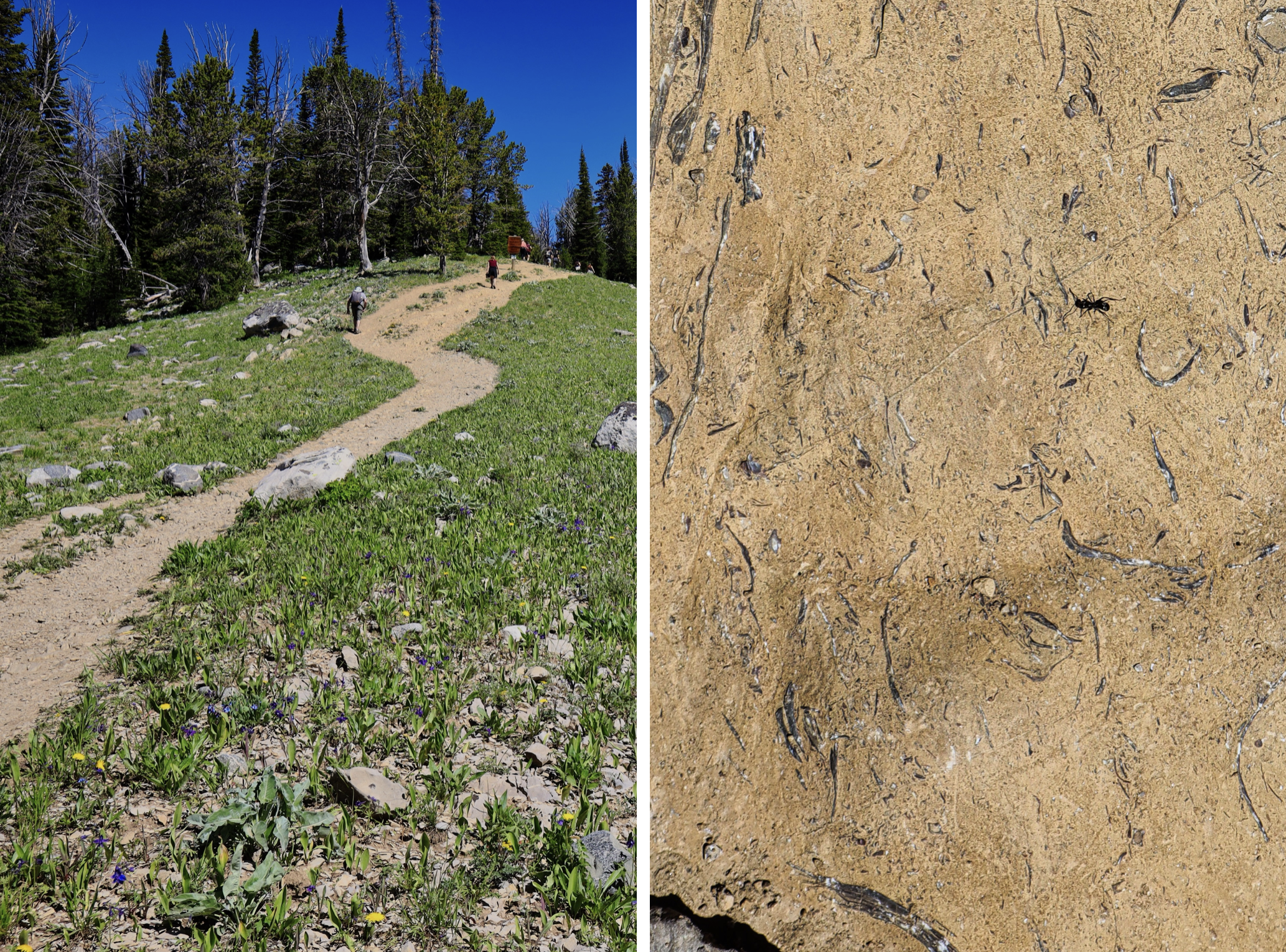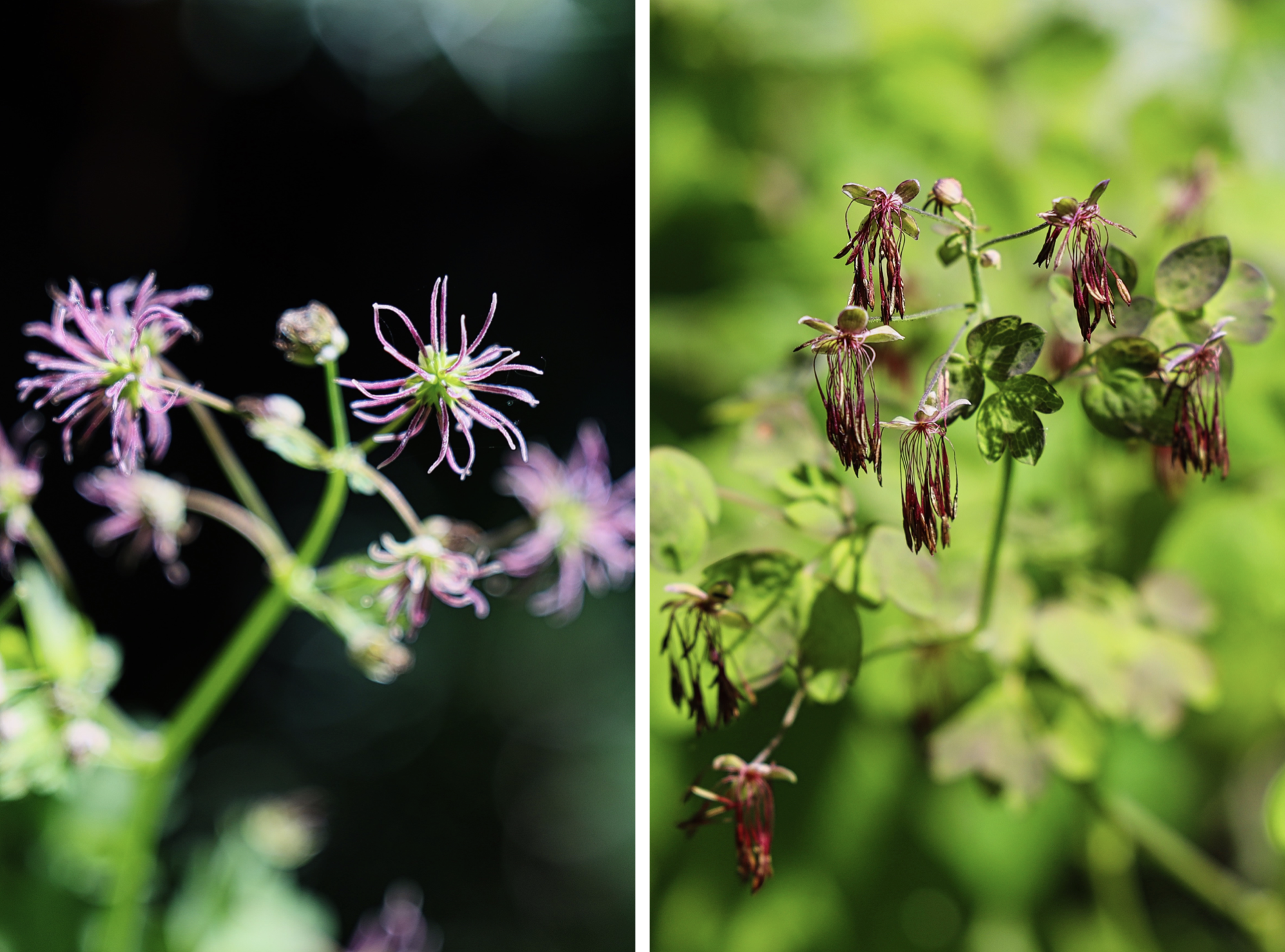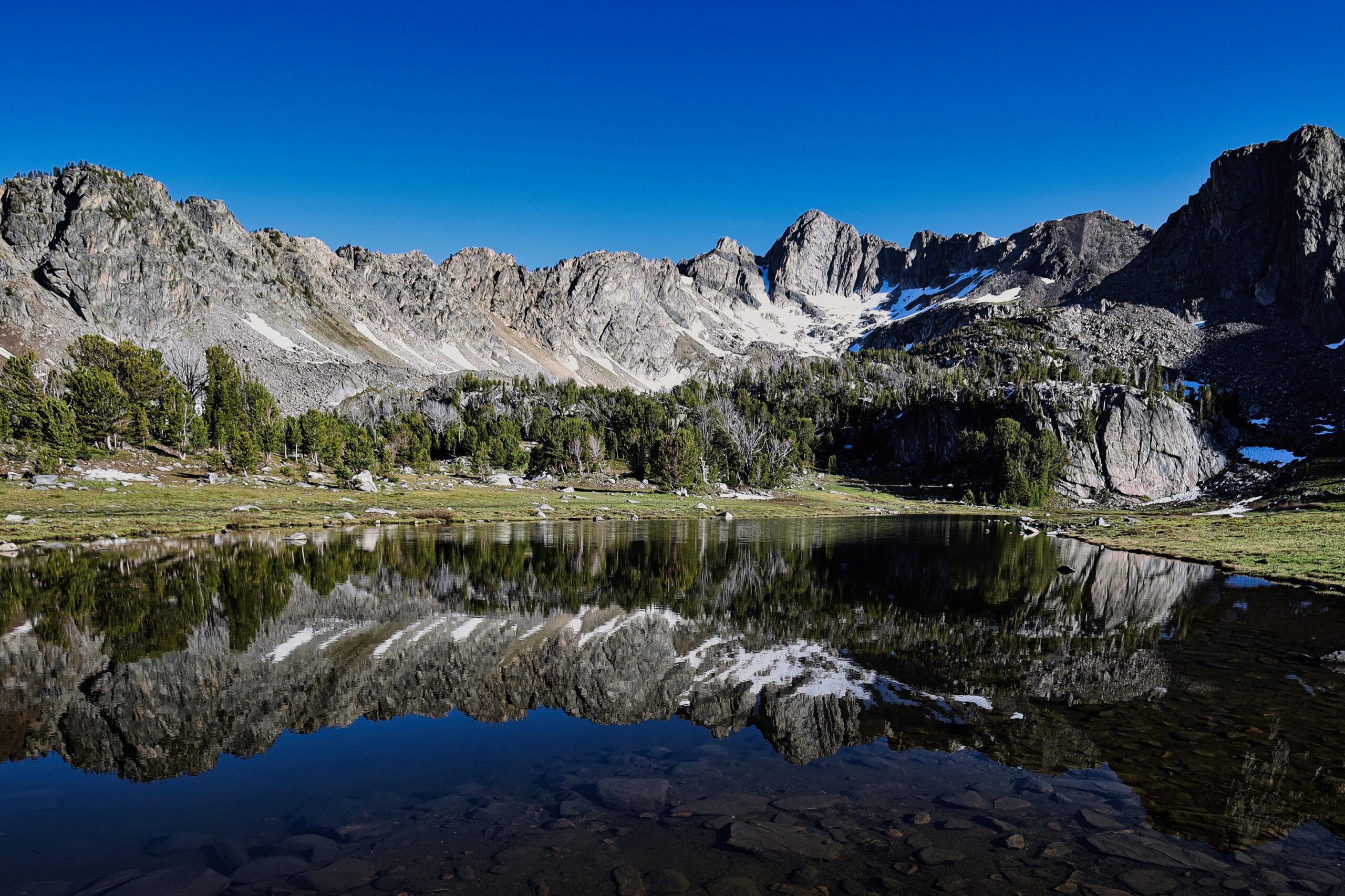By Paul Swenson EBS COLUMNIST
Happy July! Summer has arrived and with it many of you are out on the hiking trails enjoying the sun, the warmth, and the views. I took a chance the other day and decided to hike up Beehive Basin, one of my all-time favorite hikes for many decades.
The chance was not one of being in shape, or weather, or braving the flies and mosquitoes, but finding a parking spot when I got to the trailhead. I did find one, though, since I got there early.
It was a beautiful, cool, cloudless morning with a little frost on the boardwalk across the marsh at the trailhead. It’s nice to be able to hike without overheating. Right away I started spotting all the beautiful plants, flowers, animals, geology and views that make it so special here. The first hill was a little warm-up for the rest of the hike and I was in a bit of a rush to get to the pond in the basin before the wind started rippling the water. I was on a mission to get some photographs of the mountains reflecting on its surface.
On the way up I started to reflect on the last year of writing for Explore Big Sky and what an incredible experience it has been. I really enjoy helping you all understand what I find fascinating about our region and thank you so much for all the positive comments that you have shared with me, or with someone I know.
I made it to the pond just in time. The breeze picked up right after I grabbed the photograph and put a ripple on the surface. So I walked around looking for some interesting geology and plants to share with you.

Earlier this year I wrote about the Spanish Peaks gneiss, in its full glory around Beehive Basin. Within this rock one can also find garnets and a green mineral called serpentinite if you keep a keen eye out looking for them. The garnets are not gem-quality, but you should be able to see their red, roughly hexagonal cross-section, usually within a dark rock matrix. They are called Almandine garnets and for the geochemistry fans, have a chemical formula Fe3Al2Si3O12.
Heading back down the trail after spending a beautiful morning in the basin I thought I should also share with you how these rocks got here in the first place.
In the “That’s Gneiss” article, I described the core rocks of the Spanish Peaks and that they were buried 10-20 kilometers deep, then uplifted during the formation of the Rocky Mountains. On the Beehive hike you get to see the high-angle reverse fault that lifted these basement rocks up from the depths. It places these 2-billion-year-old rocks in contact with, and overriding, 350-million-year-old limestones of the Madison Formation. So if you climb up on the ridge on both sides of the basin, you can straddle 1.5 billion years of Earth’s history on the fault line. Cool. Or as you walk up the trail, look down at your feet at the wilderness sign—you will see fossil brachiopods indicating the limestone, then in another quarter mile you are in the metamorphic basement rocks.

The fault you see in Beehive stretches from Virginia City, through Beehive and Bear Basin, down Dudley Creek, up Portal Creek, through Paradise Valley, past Gardner into the Beartooth Range. It is a quite massive fault that uplifted a huge block of crust to compensate for compression that was occurring during the formation of the Rockies.
As I continued my journey back to the trailhead I passed by more and more hikers coming up. Having my camera around my neck always seems to elicit the same question from many passersby: “Did you see anything?”
Seems like a silly question, but they have to be careful asking me because I might give them an entire dissertation on what I saw. Most seemed to not have the time for the complete answer so I gave them an imperfect one.

Speaking of imperfect… flowers. I saw a species of plant, the meadow rue, Thalictrum occidentale, whose flowers on a plant are either male or female. I introduced the idea of imperfect flowers last summer with Lodgepole Pines, but the rue is much more dainty. They are small, delicate flowers that most will walk by. But take a look in the shady, wet spots under the evergreens and you will spot them. They, like every natural wonder in our backyard, are worth a close inspection.













